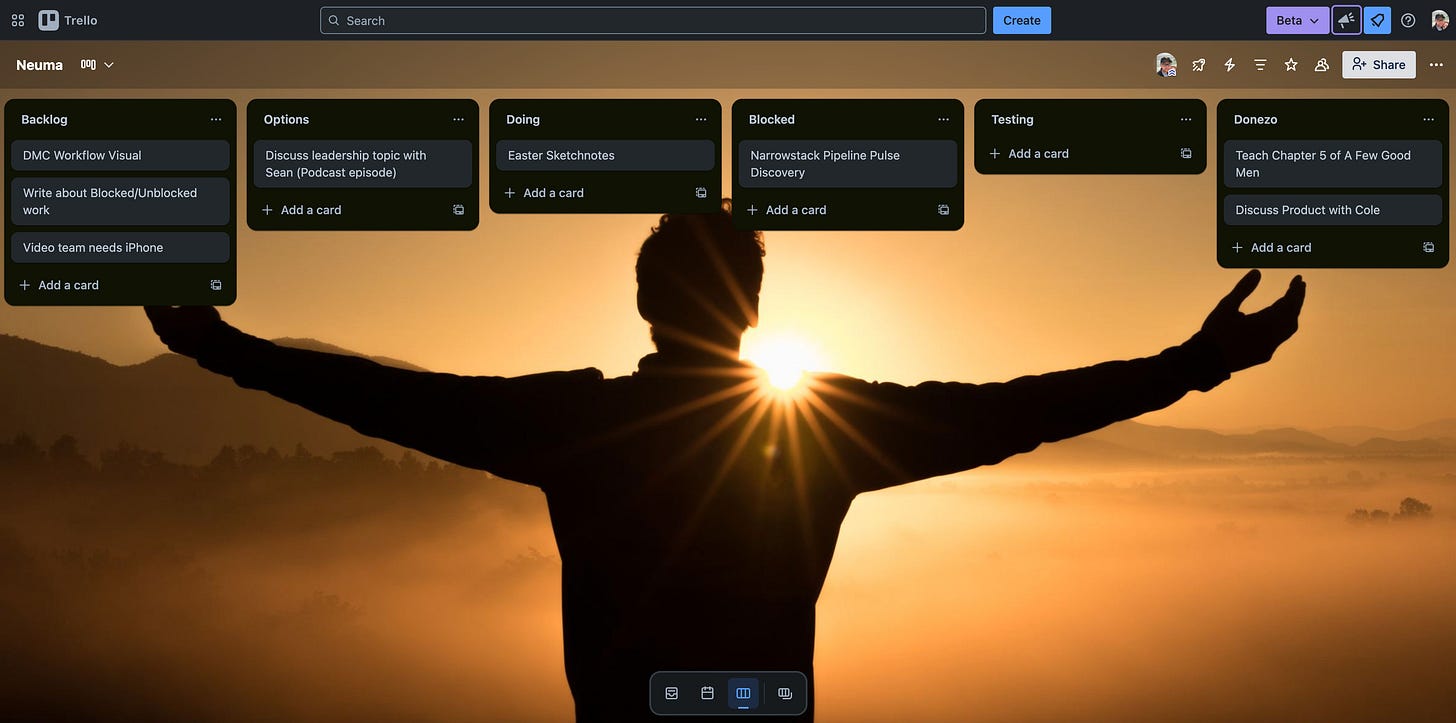We Take the Path of Least Resistance
The case for not using an On Hold or Blocked Column in you workflow
🔥 Hot Take: Blocked Columns Are Killing Your Flow
When I coach teams and see a “Blocked” or “On Hold” column on their Kanban or Scrum board, I can usually predict - with about 99% accuracy - that the team is struggling to deliver.
Why?
Because those columns don’t just hold blocked work.
They hold a blocked mindset. 🧠🚧
Here’s what typically happens:
A team hits a roadblock. Instead of solving the issue, they drag the work into a Blocked column… and start something new. That’s taking the path of least resistance. It feels like progress, but it’s really just motion. And over time, that motion leads to a graveyard of half-finished work and an ever-growing pile of context switching and interruption.
Conversely, when I’ve helped teams remove their Blocked and On Hold columns, here’s what happened:
✅ Throughput doubled (The most recent team hit 7x the throughput!!!)
⏱️ Cycle time was cut in half
📉 Work in Progress dropped significantly
“How,” you may ask? Because they were forcing themselves to continue owning the work. These improvements are no mere coincidence. That’s flow.
What’s Actually Going On?
Let’s get visual. Here’s how I typically structure a basic Kanban board:
Backlog – the intake/triage
Options – things I might start soon
Doing – actively building a solution
Testing – verifying the solution solves the request
Donezo – value delivered
But what happens when something in Doing gets stuck?
Most teams react by shoving it into a Blocked or On Hold column.
Here's the problem: “Blocked” is not an activity. It’s a label that too often becomes a grave marker. Teams feel like they’ve done enough - maybe they sent an email, pinged someone on Slack - and now it’s “not their problem.” They mentally stop owning the work.
And that is the problem:
Teams stop owning the outcome.
A Real Story
I once worked with a Windows Security team that managed Active Directory group requests. The actual work? Minutes. The average lead time? 30 days.
Why? Because as soon as we submitted a request, we’d move the card to “On Hold” and go start something else. We let the work sit. And sit. And pile up.
That didn’t sit right with me.
Instead of letting things get “blocked,” I booked weekly time with the security team. We collaborated. We followed up. We finished. That small change cut our delivery time by weeks.
Finishing > Starting
You may remember my story about Josh and His Foxes that covered WIP limits. The reason WIP limits worked so well was simple: they forced the team to get uncomfortable. To walk over to someone’s desk. To wait for an answer. To solve the issue. They didn’t let work rot in a Blocked column.
Now, I get pushback on this all the time. One leader told me, “That’s an expensive way for my team to spend their time.”
I get it. We want our people focused—writing code, designing solutions, producing content.
But let me ask you this:
What’s the value of a written blog that’s never published?
What’s the value of code that never gets shipped?
Zero.
Value isn’t in the doing.
Value is in the delivering. 📦
And if your team isn't finishing, they aren't delivering.
A Better Way
Here’s a better way to visualize blocked work:
Instead of moving work to a new column, mark it red right where it is - in the Doing column in this example. Use a flag 🚩. Almost all digital tools have some type of marker to clearly yell “this work needs attention!”
That marker says: this work is still in progress, you still own it, and it needs help.
It keeps the clock ticking.
It keeps the team engaged.
It keeps ownership where it belongs.
Blocked columns let you hide work.
Red markers shine a light on it. 🔦
🛬 Landing the Plane: Burn the Blocked Column
Your team’s job is not to start work.
It’s to finish it. In the words of my friend Mark Anderson, “Ship it!”
So here’s the challenge:
Kill the Blocked column. Don’t take the path of least resistance. Keep the work visible. And watch what happens when your team stops hiding behind blockers—and starts owning the outcome.
Until next time, Keep Learning. Keep Growing.







